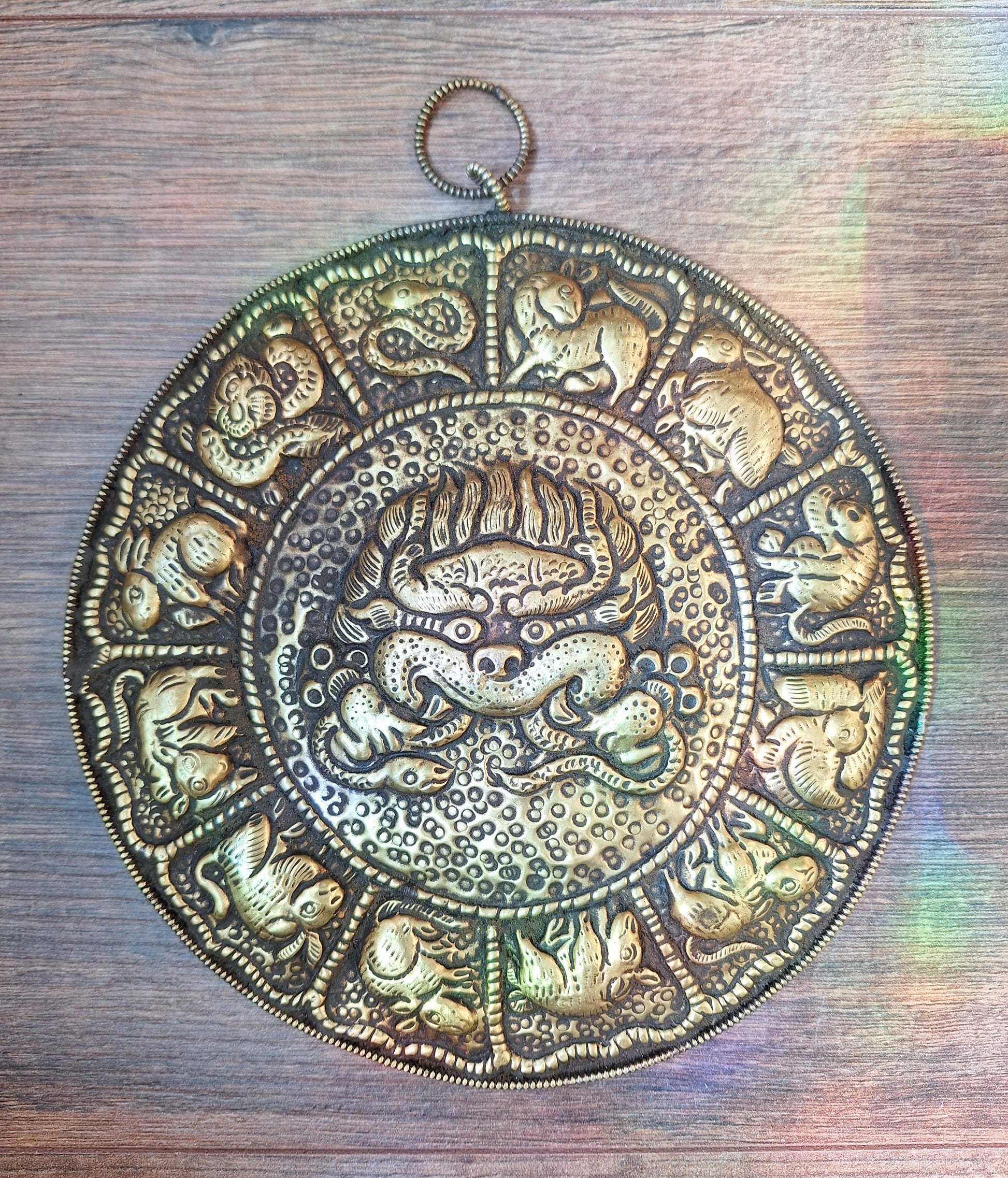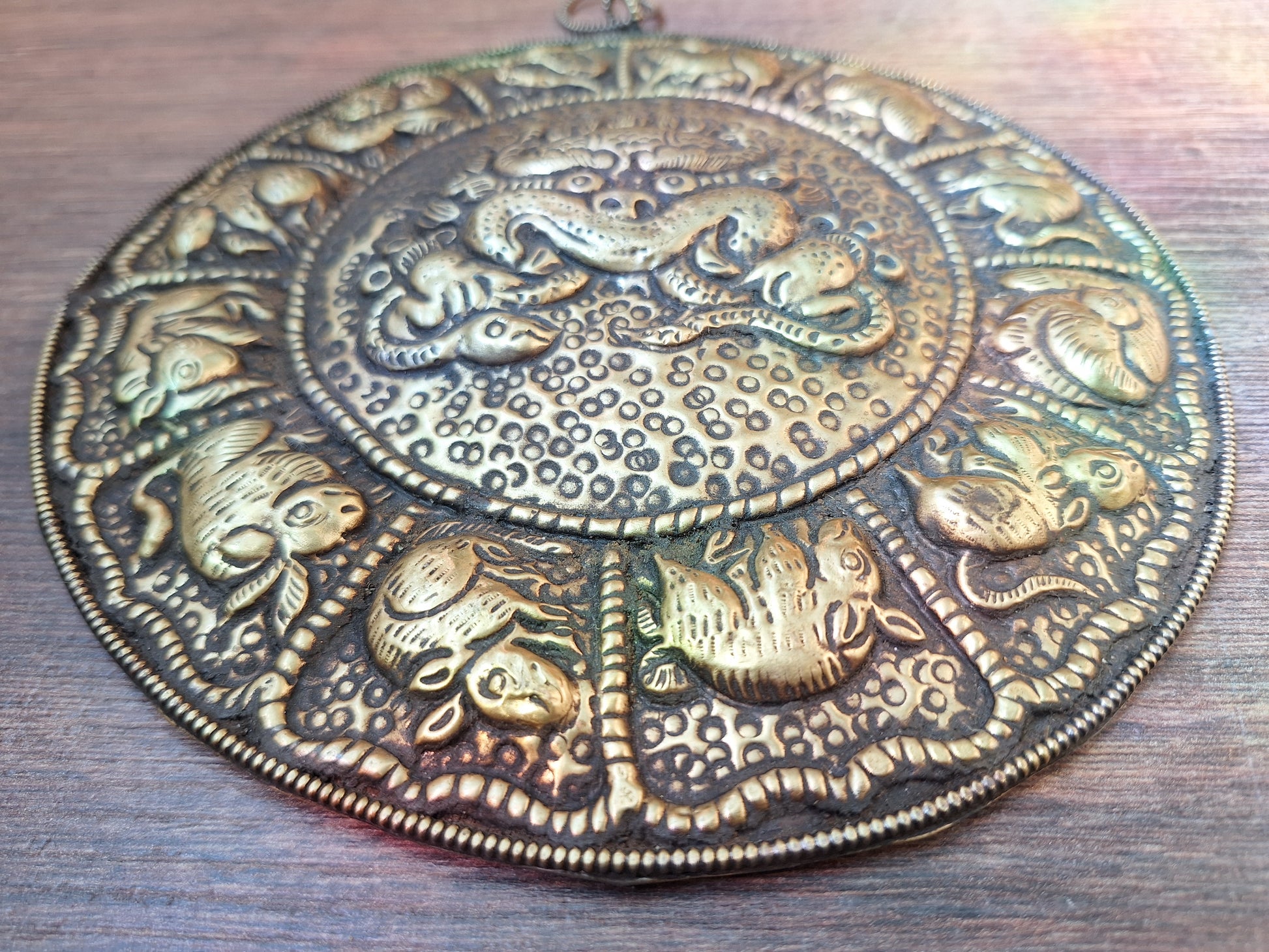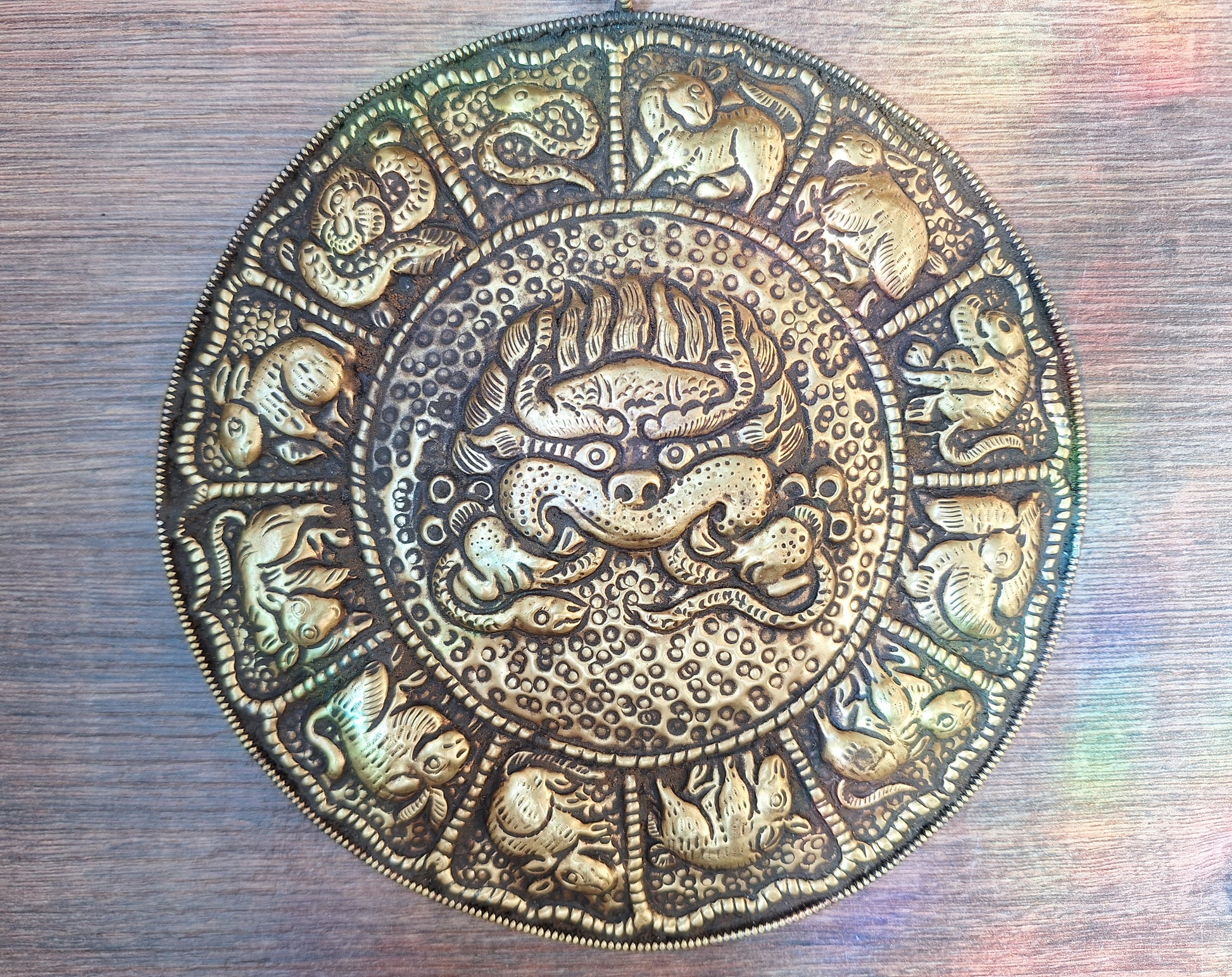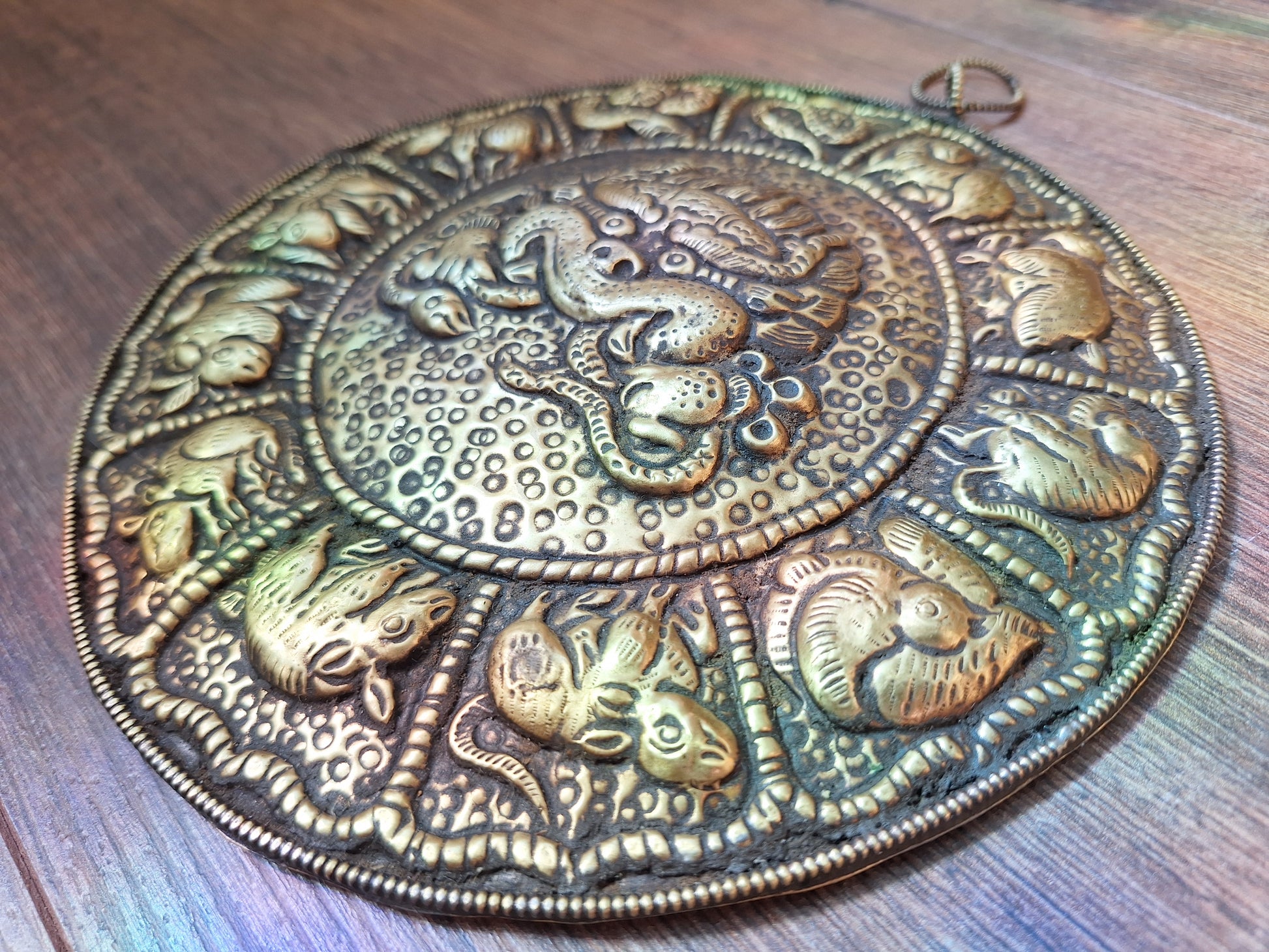Seawolf Shop
Vintage brass mandala wallhanger Cheppu
Vintage brass mandala wallhanger Cheppu
Couldn't load pickup availability
Share
Vintage brass mandala wallhanger from Nepal, featuring a depiction of the mythical creature Cheppu in the center, surrounded by the animals of the eastern zodiac.
Though perhaps a bit lesser-known than other mythical creatures such as Garuda with whom he shares some similar features, Cheppu isn’t any less fascinating.
The story of his origin is deeply intertwined with the creation story of Nepal’s Kathmandu valley itself. It tells how once upon a time, the valley of Kathmandu was completely submerged. In the depths of the lake, among many aquatic animals, dwelled Cheppu, a disfigured, grotesque creature. One day the boddhisattva Manjushri came by and liked the place so much that he decided to transform the lake into a for humans habitable valley. With his sword he cut through the southern hill of the valley, so the water could drain off. All the aquatic animals quickly disappeared with the water, except for Cheppu. After some discussion also Cheppu agreed to come out of the water, but out of shame for his grotesque appearance he asked Manjushri not to look at him. Being too curious however, Manjushri peeked anyway. Afterwards, being remorseful for his betrayal, Manjushri offered Cheppu a most honorable role; guardian of the temples.
And this is where Cheppu can still be seen often today; his depiction still watches over the entrance of many of the temples in the valley of Kathmandu (and elsewhere in Nepal) and wards off the evil spirits from these sacred places.
Unlike for example Garuda who is often shown in full-body depiction, Cheppu is almost always depicted as only a head. This is sometimes explained by the fact of his disfigurement; his lower body is too terrible to look at. Or sometimes by the fact that Manjushri promised to Cheppu that from their meeting onwards, Cheppu could remain half-hidden forever.
As a wrathful guardian figure, Cheppu fights against all kinds of evil. His depiction often shows him eating snakes. Just like Garuda, he is a sworn enemy of the naga’s. Also his depiction represents the transformation of chaos (the lake) into order (civilization, the human town in the valley) and is thereby intricately tied to the cultural identity of Kathmandu.
This wallhanger has a diameter of 18,5 centimeters and a weight of 209 grams. The thin brass plating from the frontside has been folded unto a silver colored metal backside, in which the symbol of a double dorje has been stamped.
Only one available.









